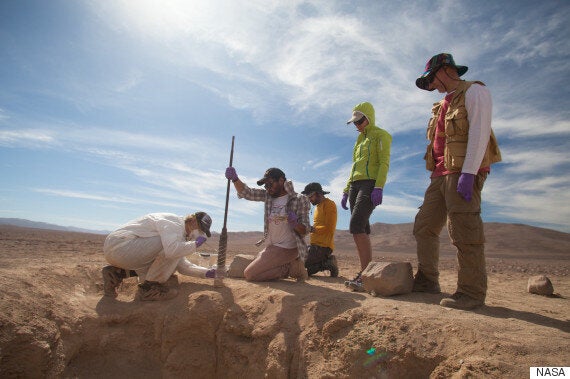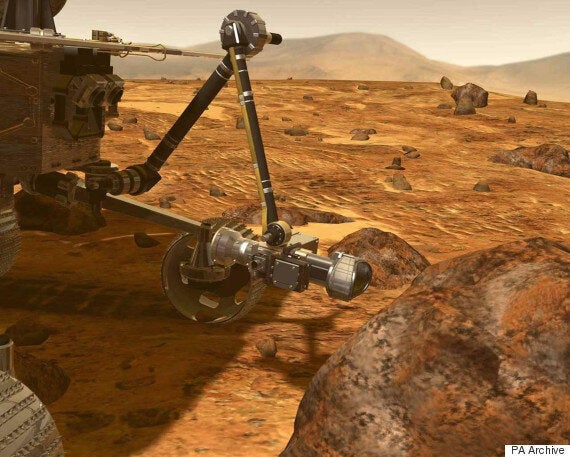Alien hunting in our solar system is sadly not the romantic adventure it sounds like.
Rather than hopping into a spacecraft and the sticking down a flag, scientists have had to come up with new and inventive ways of finding even the tiniest scrap of life on our neighbour planets just to prove that we're not alone in the universe.

Scientists carefully sample ground-truth material obtained from the 2.2 meter depth science excavation pit.
Mars seems to be one of the most likely prospects however NASA believes that if there is life, it's probably not scurrying around on the surface. Not only is it often minus 100 degrees at night, it's also spectacularly dry.
To even have a hope of finding alien life scientists are having to search deeper within Mars. To find this life NASA has finished work on the Atacama Rover Astrobiology Drilling Studies project - a powerful drill which in the future will be able to detect life in even the most hospitable environments.
SEE ALSO:
- NASA Spirit Rover May Have Spotted Signs Of 'Alien Life On Mars' Experts Claim
- Alien Life On Mars Is An 'Exciting' Possibility Says The Martian's NASA Scientist
- Elon Musk: Alien Life On Mars Won't Be Harmed By A Human Colony
- NASA's Mars Announcement Takes Us One Step Closer To Solving The Mystery Around Planet's 'Alien Life'
Over 20 scientists found themselves holed up in the ghost mining town of Yungay Station in Chile where the drill was able to power through the arid land and search for organic molecules known as biomarkers.
It is these biomarkers that scientists hope to find which will prove that either life currently exists on Mars or did at one point exist on the red planet.

A CGI image shows NASA's Spirit rover on Mars inspecting rocks on the surface.
“Putting life-detection instruments in a difficult, Mars-analog environment will help us figure out the best ways of looking for past or current life on Mars, if it existed,” said Dr. Brian Glass.
“Having both subsurface reach and surface mobility should greatly increase the number of biomarker and life-target sites we can sample in the Atacama,”